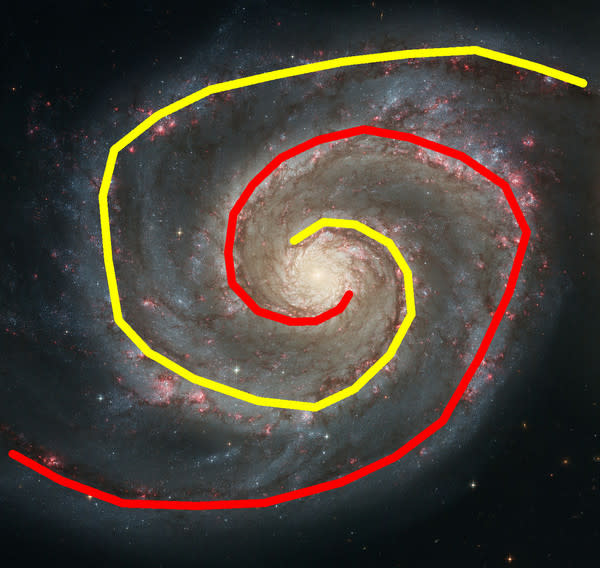Astronomers call for help to learn how supermassive black holes form – Astronomy Magazine
Spiral Graph asks users to trace out the shape of a spiral galaxy’s arms, helping give astronomers a potential proxy for studying a number of other properties. That may include things like the size of the galaxy’s supermassive black hole, as well as the mass of the galaxy’s dark matter and stars.
Spiral Graph/NASA, ESA, S. Beckwith (STScI), Hubble Heritage Team (STScI/AURA
How Spiral Graph Works
To investigate further, astronomers launched Spiral Graph. The project aims to measure how spiral arms wind in thousands of distant galaxies.
First, users confirm that each galaxy they’re shown is indeed a spiral. Then, they draw lines to sketch out its shape. These lines measure how tight or open the spiral galaxy’s arms are.
Tight spiral arms suggest a large supermassive black hole. Open spiral arms indicate a more modest black hole.
As citizen scientists find interesting candidates, it creates a list of target galaxies that astronomers can study in more detail with their telescopes.
Citizens Scientists Outperform Computers
The project includes some 6,000 black-and-white images of galaxies typically taken by the Dark Energy Camera instrument in Chile or the Sloan Digital Sky Survey’s telescope in New Mexico. Once 15 people have classified a particular galaxy, the image is retired and considered complete.
Astronomers did already measure the tightness of these same galaxies’ spiral arms using an algorithm; however, the scientists also wanted to confirm the computer’s findings with the results from citizen scientists. In a study published earlier this month in the journal Monthly Notices of the Royal Astronomical Society the team found that Spiral Graph users are actually better at tracing galaxy shapes than algorithms are. The software struggles to know where spirals begin and end, something humans don’t have a problem with.
In some other large-scale cosmology research, citizen scientists have also proven to be more accurate than computers. And combining the results from humans and AI can boost confidence in the results.
And the effort doesn’t only look at the pitch of spiral arms; volunteers are also chronicling the structure of galaxies and whether they’re merging with another galaxy. So even if the correlation between spiral arm shape and supermassive black hole size doesn’t pan out, they’ll still have advanced the understanding of galactic evolution in other ways.







